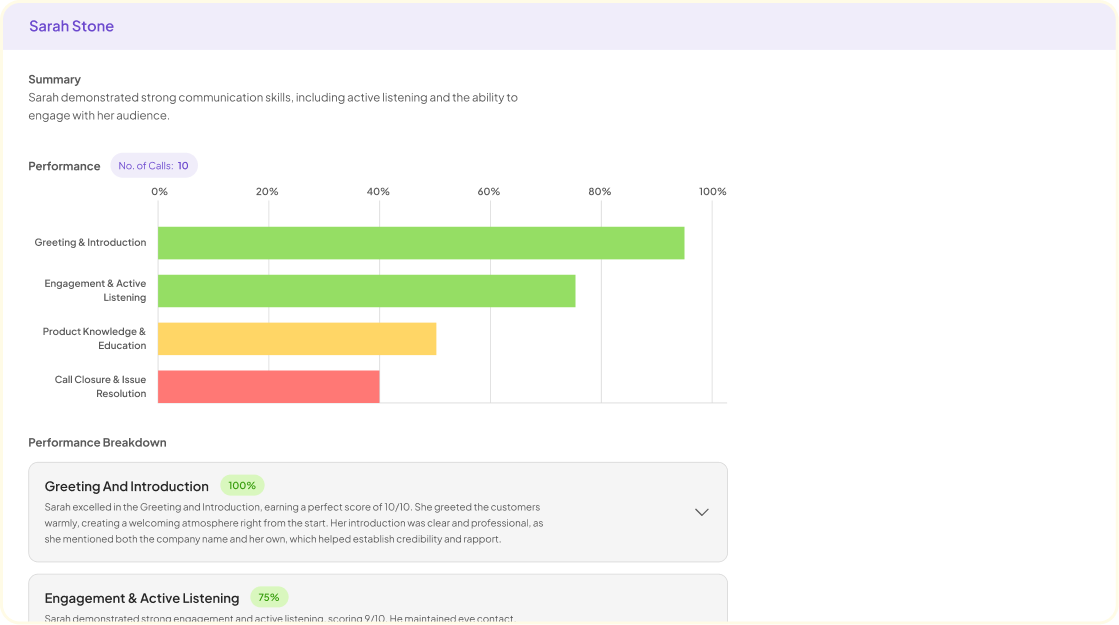Service Experience Innovation plays a crucial role in how businesses enhance customer interactions. By creatively redesigning service processes, organizations can elevate the overall client experience, making it more engaging and memorable. This innovation encompasses various strategies aimed at understanding customer needs and expectations, allowing businesses to tailor their services accordingly.
Furthermore, investing in Service Experience Innovation leads to stronger customer loyalty and satisfaction. When companies proactively address pain points and streamline their service delivery, they not only improve efficiency but also create a lasting impression on their audience. Therefore, focusing on innovative service experiences is essential for businesses looking to thrive in an increasingly competitive environment.
Understanding the Basics of Service Experience Innovation
Service Experience Innovation involves rethinking how companies interact with their customers, emphasizing empathy and understanding. At its core, this approach seeks to transform the customer journey, ensuring that every touchpoint feels seamless and valuable. Innovating service experiences means acknowledging customer feedback and integrating it into future interactions. By doing so, businesses can create tailored services that resonate with their audience on a deeper level.
To effectively implement Service Experience Innovation, three key components are essential: 1) Customer Insights, which help identify pain points and preferences; 2) Co-Creation, where customers actively participate in developing services; and 3) Continuous Improvement, ensuring that feedback loops lead to ongoing innovation. These elements work together to enhance customer satisfaction, drive loyalty, and ultimately support sustained growth. Embracing this innovation mindset is crucial for organizations aiming to stay relevant in today’s competitive environment.
What Is Service Experience Innovation?
Service Experience Innovation focuses on reimagining how services engage customers. This approach enhances customer interactions by integrating insights, creativity, and technology. At its core, it aims to identify and solve pain points in the service journey, transforming these challenges into opportunities for improvement. By fostering a deeper understanding of customer needs, businesses can create experiences that resonate on a personal level.
To achieve effective Service Experience Innovation, key elements must be addressed. First, understanding customer insights is crucial. Gathering feedback helps organizations tailor their services to actual customer desires. Next, fostering collaboration among team members ensures diverse perspectives are considered, which can lead to innovative solutions. Lastly, leveraging technology for data analysis streamlines the process of translating insights into actionable strategies. By focusing on these components, organizations can enhance their service offerings and create lasting, positive impressions with customers.
The Importance of Service Design in Modern Business
Service Experience Innovation is crucial in today's competitive business environment. Companies must prioritize the creation of exceptional service experiences to foster customer loyalty and retention. Service design plays a vital role in this process by systematically structuring the way a service is delivered to meet and exceed customer expectations.
Incorporating service design allows businesses to understand the entire journey of a customer, identifying key touchpoints and pain points that can significantly impact their experience. This thoughtful approach not only improves customer satisfaction but also drives innovation by adapting services to reflect changing customer needs. As businesses cultivate deeper connections with customers, they can create more meaningful interactions that distinguish them from competitors. Ultimately, effective service design will lead organizations to harness insights, enhance customer experience, and secure a lasting business advantage.
Strategies for Implementing Service Experience Innovation
To implement service experience innovation effectively, organizations must first embrace a customer-centered mindset. Understanding the specific needs and pain points of customers will drive innovative changes. Begin by gathering insights from customer feedback, which lays the foundation for identifying areas ripe for improvement. Prioritize these insights to ensure that the initiatives taken align directly with customer expectations and desires.
Next, develop a structured approach to testing and iterating on new service ideas. Establish a small-scale pilot program to experiment with innovations before rolling them out. This measured approach allows for real-time feedback and adjustments. Additionally, encourage cross-functional collaboration among different teams, as diverse perspectives can lead to more holistic solutions. Fostering a culture of innovation, where all employees feel empowered to contribute ideas, will further enhance the service experience. Ultimately, these strategies create a pathway toward delivering exceptional service experiences that resonate with customers.
Designing Customer-Centric Services
Designing customer-centric services requires an in-depth understanding of user needs and behaviors. This process emphasizes the importance of creating a service experience that not only meets expectations but exceeds them. By focusing on the end-users, businesses can identify areas for improvement, ultimately fostering loyalty and satisfaction.
To achieve this, consider three key elements: empathy, collaboration, and iteration. First, empathy allows service designers to truly understand customer pain points and needs. Engaging directly with users through interviews or feedback sessions is crucial in capturing their genuine perspectives. Next, collaboration among cross-functional teams enriches the service design process, ensuring diverse insights and ideas are integrated. Finally, iteration is vital within service experience innovation, enabling frequent testing and refinement based on real-world feedback. By prioritizing these elements, organizations can create services that genuinely resonate with their customers, driving enhanced experiences that stand out in the market.
Utilizing Technology for Enhanced Service Design
Utilizing technology is crucial for enhancing service design and creating memorable customer experiences. With advancements in data analysis and customer interaction tools, businesses can unlock valuable insights to innovate their service offerings. An effective technological approach helps companies quickly interpret customer feedback, allowing them to adapt their services to meet evolving needs. This shift toward Service Experience Innovation is not just about using technology; it's about using it wisely to foster connection and engagement.
To maximize the benefits of technology in service design, consider these key strategies:
Automated Feedback Collection: Implement tools that automatically gather customer opinions across various touchpoints. This efficiency enables timely adjustments.
Data Analytics for Insights: Utilize advanced analytics to interpret vast amounts of customer data, recognizing patterns that drive satisfaction.
Personalization through AI: Embrace artificial intelligence to offer tailored experiences, addressing individual customer preferences and behaviors.
Collaborative Platforms: Create shared spaces for teams to access insights and collaborate effectively, consolidating knowledge for improved decision-making.
By integrating these strategies, companies can reach new heights in Service Experience Innovation and significantly enhance customer satisfaction.
Conclusion: The Future of Customer Experience through Service Experience Innovation
The future of customer experience hinges on the innovative transformation of service experiences. As businesses recognize the need for improvement, Service Experience Innovation will become vital in crafting memorable interactions that resonate with customers. Organizations must focus on understanding their customers' needs and expectations, designing services that exceed those expectations while fostering strong emotional connections.
Moreover, embracing new technologies can amplify this innovation, allowing companies to adapt rapidly to changing customer preferences. With an emphasis on personalization and convenience, the aim should be to create seamless experiences that delight customers. Ultimately, successful integration of these strategies will set the stage for lasting relationships, driving loyalty and satisfaction well into the future.


